|
BULB LOG 32 4th August 2004
I started log 31 with a Crocus scharojanii flower that had been chewed off at the stem. I spread some slug pellets to try and get the wee terror before any more damage was done and this monster is the result.
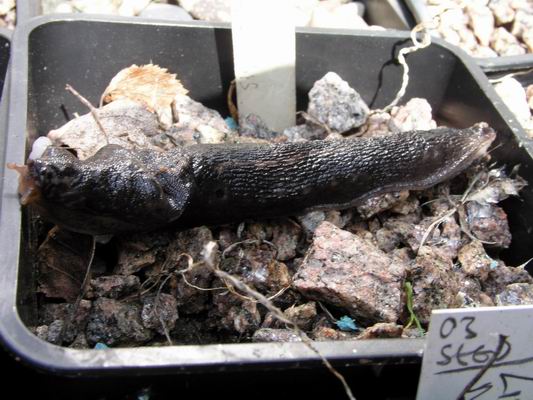
Slug
That is a 9 cm pot and it stretches from side to side how many bulbs and flowers could a giant like this eat in a night?
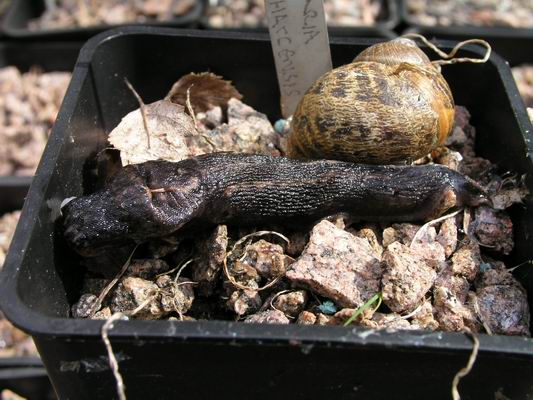
Slug & snail
I also caught a large snail, these hide down the sides of the plastic pots and they can also eat a lot. The newly emerging stems and flowers of the bulbs must be like a delicatessen to these foragers.
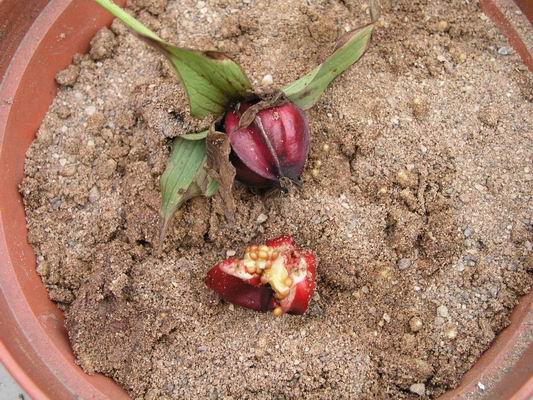
Trillium seed pod
This is the way that I separate my trillium seed form the sticky mess of the capsule. I rub it in fine dry sand for a few minutes - then I pass the mixture through a sieve.
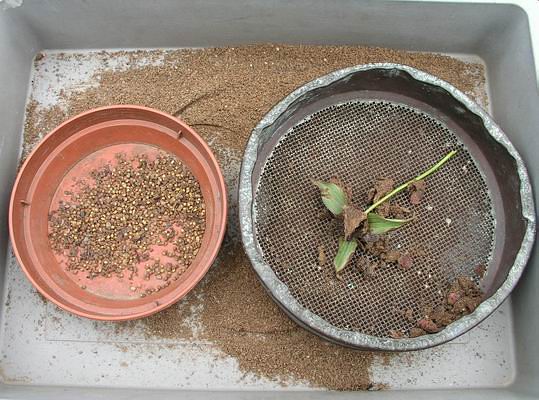
Sieve, sand & seed
The mesh on the sieve is just large enough to allow the sand to pass through but will trap the seed.
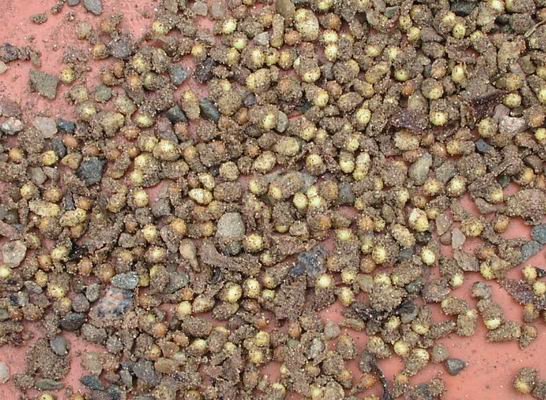
Trillium seed
I am now left with nice clean seed ready for sowing. The small amount of gravel mixed in could have been avoided if I sieved the sand first, but I find it is quite beneficial having some fine gravel mixed with the seed as it helps me get an even distribution of seed in the pot.
One of the most commonly asked questions is what type of compost do you use? There are so many different formulas around that you could write a book but we stick to one basic mix for all the plants we grow.
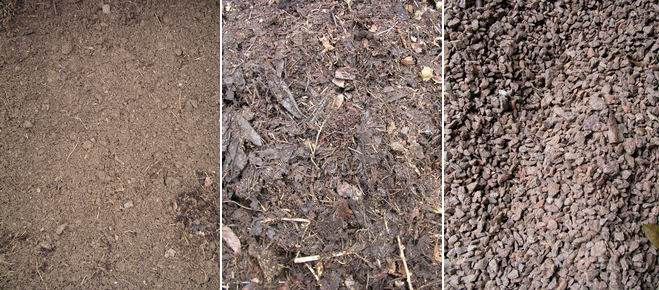
loam, humus & grit
The ingredients are loam, this is from a large pile of stacked and rotted turf (a legacy from the days when we had a lawn in our garden), leaf mould - made from the leaves we collect from our garden, and 6mm grit from a local quarry.
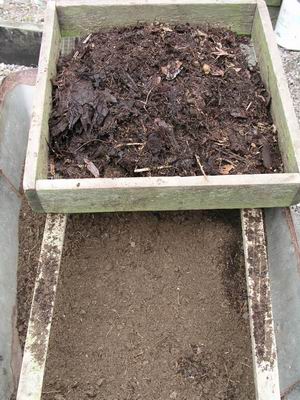
Loam and leaf riddled
The loam and the leaf mould are riddled through a 1cm mesh to break them up into a nice texture.
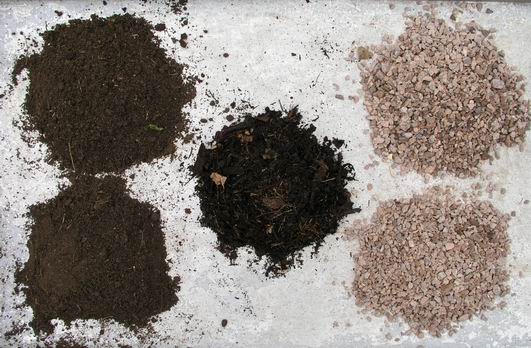
mix 2-1-2
Our mix is 2 parts loam, 1 part leaf mould and 2 parts grit - this gives us a free draining mix that will retain moisture for a reasonable length of time even in hot weather. Our loam is light and sandy but if your loam is heavy you may have to increase the amount of grit you add to achieve a free draining mix. To check the drainage place some of your mix into a pot and water it, allow it to stand for a good while so that it is evenly moist, now water it again and if the mix is good the water should drain through the mix as you watch - if it does not, add some more gravel.
I add bone meal at the rate of one cupful per 5 buckets to the mix for a food source. With bone meal, the quantity need not be so carefully measured as the more formulated chemical feeds.
We are still in full re-potting mode and when I get fed up re-potting frits I will change to crocus and then to narcissus and so the cycle continues, the old saying ' a change is as good as a rest' comes into play. {Note from Maggi: HE gets a change, but, believe me, scrubbing clean a crocus pot is JUST the same as scrubbing any other pot!!}
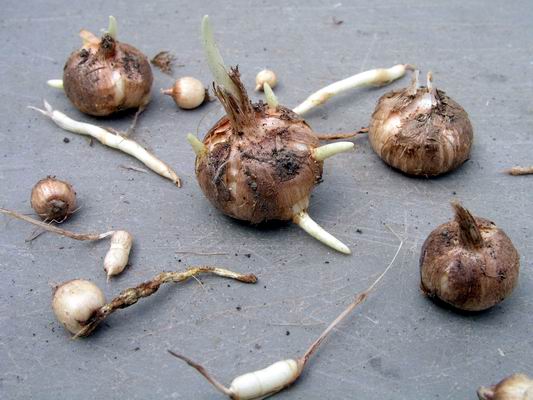
Crocus nudiflorus
Crocus nudiflorus is one of the crocus species that increases by stolons. The centre bulb has a flower shoot rising from the centre and all around it is pushing out stolons. These stolons break off at the end of the growing period (late spring) and become little torpedo-shaped bulbils which after another year's growth become mini-corms,
some of which will still have the dried out remains of the stolon attached. Because of this stoloniferous increase, Crocus nudiflorus forms patches rather than clumps when growing in the garden.
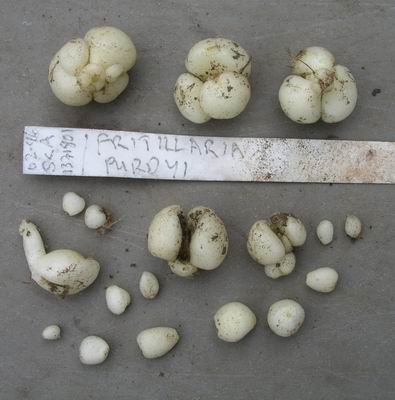
Fritillaria purdyi
Changing to frits, the North American F. purdyi has a bulb whose shape and form falls in between the twin scaled Eurasian type and the full blown flat, rice grain F. affinis type. We can just see the slightly enlarged basal plate on the larger bulbs in the picture.
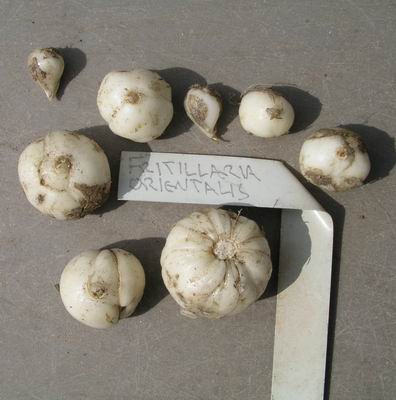
Fritillaria orientalis
The scales of Fritillaria orientalis are mostly tightly formed, unlike the loose twin scales of many such as F. hermonis amana. When viewed from the bottom it has a pleated base with little evidence of the scales.
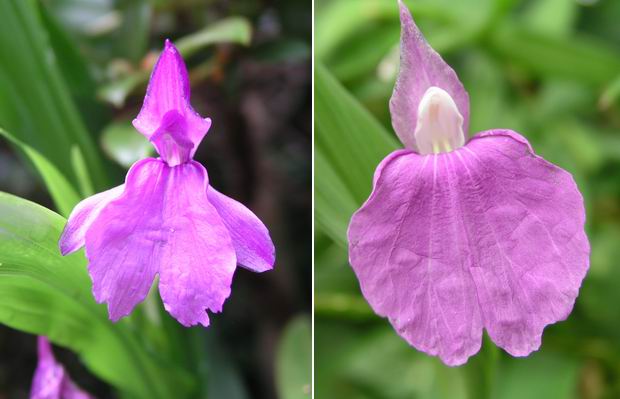
Roscoea x2
The flowering bulb for this week is Roscoea. I know these two as R. purpurea(?), left and R. brandisii 'Purple Giant' right.
^ back to the top ^
|

